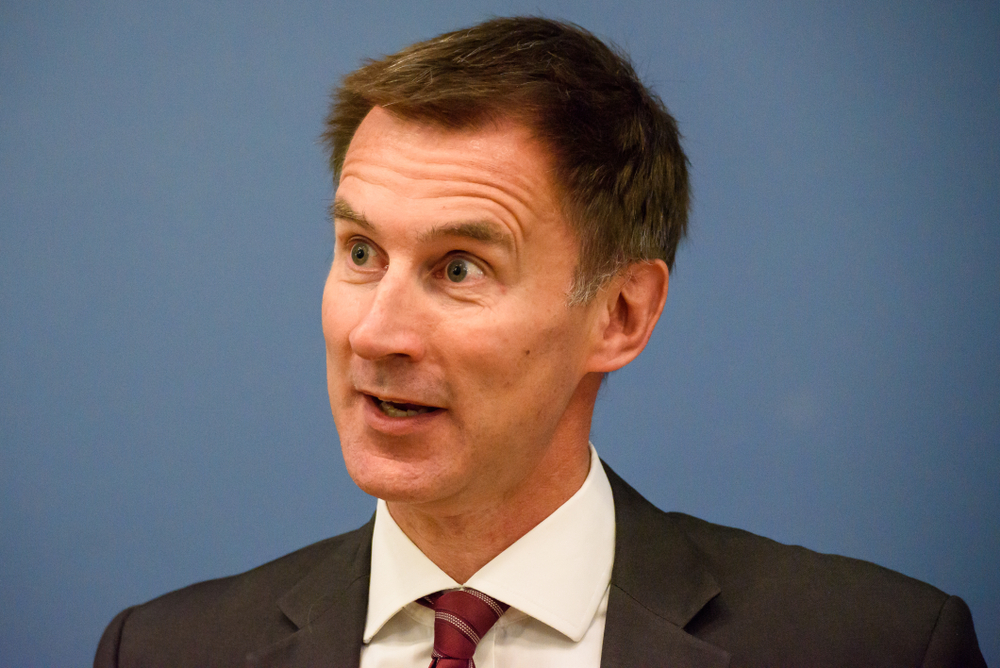Editor's Pick
What the Autumn Statement means for mortgages and housing

A reversal of the permanent Stamp Duty changes and a cap on social housing rents were just two of the measures announced by the Chancellor
Chancellor of the Exchequer, Jeremy Hunt, has delivered his Autumn Statement to the House of Commons, describing it as ‘a balanced plan for stability, a plan for growth and a plan for public services’.
With a £55bn fiscal black hole to fill, he certainly didn’t have the means for any headline-grabbing rabbits out of the hat.
But he sought to shore up confidence in the stability of the government’s economic strategy following September’s disastrous Mini-Budget.
Today’s measures took the form of tax increases through the freezing of thresholds alongside spending commitments, including uprating benefits and pensions in line with inflation.
Housing and mortgage measures
There was little announced specifically for the housing and mortgage markets, although Hunt did introduce a cap on social rent and reversed the ‘permanent’ changes to Stamp Duty announced in September.
Below we run through the measures that directly – and indirectly – impact the housing market:
Cap on social housing rents: The government is limiting the increase in rents for those in social housing in England. Under current rules, rents could have risen by up to 11.1% – but now they will only be able to rise by a maximum of 7% in 2023-24.
Stamp Duty changes now temporary: Two months ago, the government increased the nil-rate threshold of Stamp Duty Land Tax (SDLT) from £125,000 to £250,000 for all purchasers of residential property in England and Northern Ireland and increased the nil-rate threshold paid by first-time buyers from £300,000 to £425,000. The maximum purchase price for which First Time Buyers’ Relief can be claimed was also increased from £500,000 to £625,000. This was described as a permanernt change but will now be a temporary SDLT reduction until 31 March 2025.
Sarah Coles, senior personal finance analyst at Hargreaves Lansdown, said: “Property buyers will have been thrown into a quandary by the announcement on stamp duty. Right now, the market is sending out every possible signal that they might want to hang fire, because we could be reaching the peak. So it will make their decisions even harder now that Jeremy Hunt has warned them if they wait too long, they’ll end up paying more stamp duty.
“This could end up providing a useful short-term boost to the market. By moving from an open-ended stamp duty cut to a limited opportunity, it could hurry through more sales, and help to keep the market ticking over until March 2025, when there’s a reasonable chance we will be out the other side of the recession.”
Reforming Support for Mortgage Interest :The government will allow those on Universal Credit to apply for a loan to help with interest repayments after three months, instead of nine. It will also abolish the zero earnings rule to allow claimants to continue receiving support while in work and on Universal Credit. This will come into effect in Spring 2023.
Changes to dividends and Capital Gains Tax: The government will reduce the Dividend Allowance from £2,000 to £1,000 from April 2023, and to £500 from April 2024, and reduce the Capital Gains Tax Annual Exempt Amount from £12,300 to £6,000 from April 2023 and to £3,000 from April 2024.
Zaid Patel, director of London-based estate and lettings agents, Highcastle Estates, said: “As an estate agent, with the CGT tax allowance to be halved to £6,000 from April 2023, we may see an increase in landlords selling up and second homeowners listing their properties with the hope of completing before April. Landlords, who own property as part of a limited company, will be further penalised as they’ll pay more tax on dividends. This, coupled with the rise in corporation tax, will likely lead to more landlords trying to sell their properties.”
Inheritance tax bands frozen: The inheritance tax nil rate bands are already set at current levels until April 2026 and will stay fixed at these levels for a further two years until April 2028. The nil-rate band will continue at £325,000, the residence nil-rate band will continue at £175,000, and the residence nil-rate band taper will continue to start at £2 million.
Steve Bangs, CEO at Pegasus, said: “Thanks to rampant house price inflation, the IHT freeze means that more homeowners are at risk of breaking the £325,000 tax-free allowance when they pass on their homes, leaving them at a financial disadvantage at a time when every penny counts. With the average inheritance tax bill due to hit £283,000 in 2028, it was an opportunity missed to not provide incentives to encourage downsizing, to free up more housing stock and keep the property market moving as a recession beds in, in life rather than in death.”
£6bn funding into energy-efficient homes: The government announced a new long-term commitment to drive improvements in energy efficiency to bring down bills for households, businesses and the public sector with an ambition to reduce the UK’s final energy consumption from buildings and industry by 15% by 2030 against 2021 levels. New government funding worth £6 billion will be made available from 2025 to 2028, in addition to the £6.6 billion provided in this Parliament. To achieve this target, a new Energy Efficiency Taskforce will be charged with delivering energy efficiency across the economy.
Brian Murphy, head of lending at Mortgage Advice Bureau, said: “It’s heartening to see the Government devote a further £6 billion to insulating the UK’s ageing housing stock, as the net zero deadline of 2050 starts loom closer. The responsibility of solving energy efficiency in our homes is yet to be fully claimed, and while it may be a joint effort between homeowners, lenders, councils and the Government, it’s good to see some solid investment promised – better insulated homes also mean lower bills and will go some way to solving the Cost of Living crisis.”
